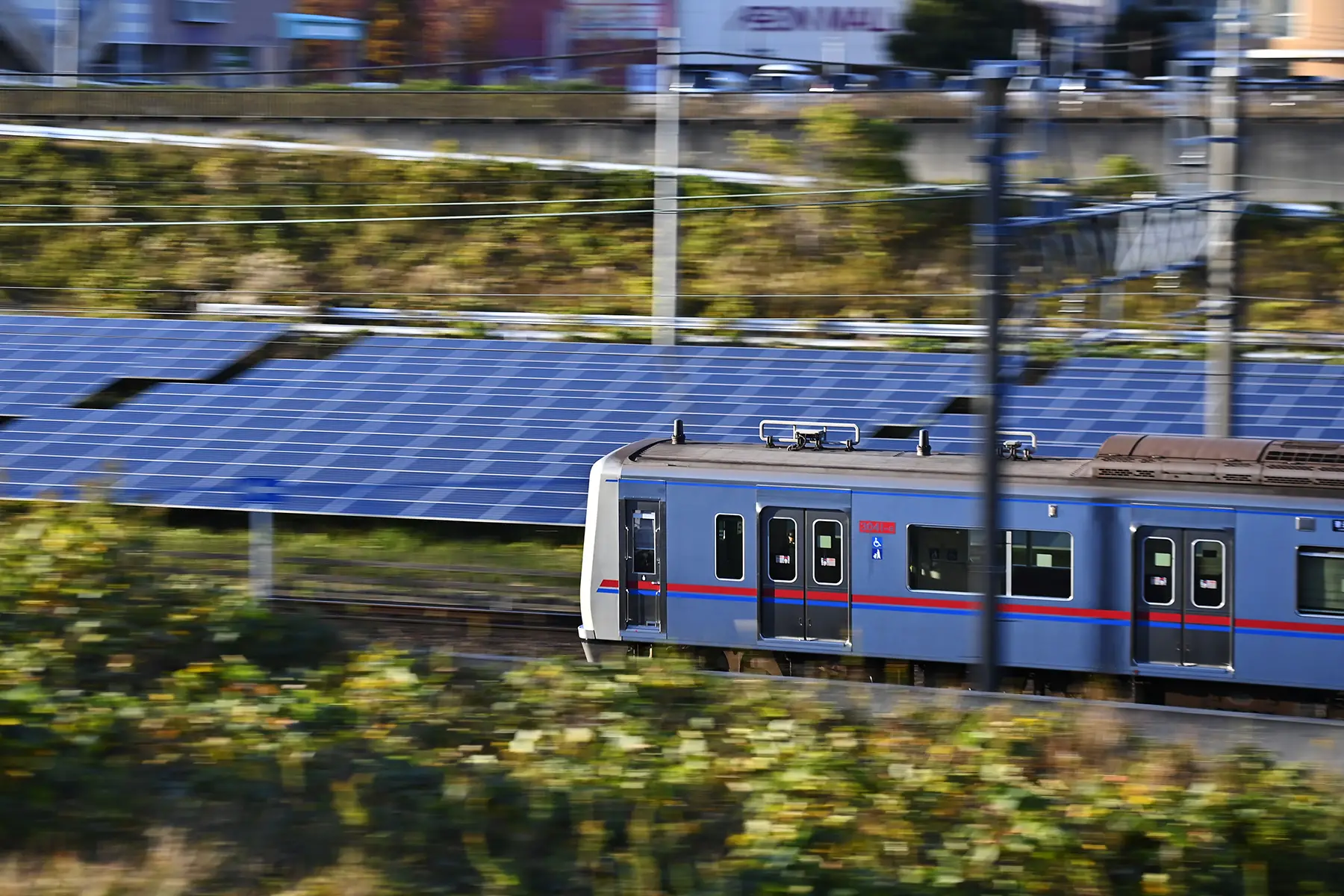Recycling (リサイクル) and trash disposal (ゴミ処理) are taken very seriously in Japan. As such, the country works hard to reduce the impact of its waste, and both the government and its citizens value sustainability.
Additionally, households and businesses must follow strict waste sorting rules or face steep fines. These rules can be tricky at first, but with practice, they’ll become second nature.
Learn the ins and outs of waste disposal and recycling in Japan, including the following topics:
The Japanese recycling system
The government-based Japanese Container and Package Recycling Association (JCPRA) (日本容器包装リサイクル協会) oversees recycling, but the country’s local municipalities (地方自治体) regulate waste collection. Municipal taxes pay for this service.

The general public in Japan makes great efforts to implement waste reduction and recycling into their lifestyle. As such, the recycling rate of total waste produced in 2021 was about 20%. People often use the term mottainai (もったいない), meaning “what a waste,” to encourage these efforts.
Furthermore, the government enacted a new law in 2022 requiring companies to reduce the use of disposable plastics to meet their target of a plastic-free society by 2050. For example, supermarkets will charge extra tax on their plastic bags, and companies must pay a consignment fee for using plastic packaging and containers in their business.
How do you sort your waste in Japan?
There are many different waste categories in Japan, as illustrated by the table below.
| Category | Examples |
| Burnable waste (燃えるごみ/可燃ごみ) | Food waste, face masks, diapers, clothing, shoes, dirty plastic containers, unrecyclable paper, vinyl products |
| Non-burnable waste (燃えないごみ/不燃ごみ) | Metal pots, broken glass, ceramics, aerosol cans, light bulbs, lighters, small appliances (all non-recyclable) |
| Cans (カン) | Aluminum and steel cans |
| Glass bottles (びん) | Glass bottles used for beverages, glass containers |
| PET bottles (ペットボトル) | Plastic bottles |
| Plastic materials (プラスチック) | Plastic food containers, bags, hangers, straws, toothbrushes |
| Recyclable paper (古紙) | Newspapers, magazines, books, cardboard |
| Oversized waste (粗大(そだい)ごみ) | Furniture, bicycles, medium to large appliances (usually excluding refrigerators and washing machines) |
What happens to recycled materials in Japan?
After doing your part, the collected materials are processed before finding new uses. Of course, recycling centers sort materials to ensure they are free from contaminants and properly grouped. Then the materials are processed by shredding, melting, or refining to create new products. For example, recycled plastic can be used to make containers or fibers for clothing.
While Japan has a good reputation for reusing recycled materials, there is some controversy. For instance, the country produces around 23.2 billion plastic bottles yearly, and in 2017, Japan sent 1.3 million tons of scrap plastic overseas instead of processing it.
How do I recycle in Japan?
The way you recycle your waste will depend on where you live, given that each municipality has its regulations and collection schedule, which you can find on their website. Some areas even provide waste disposal guides in other languages, like this sheet (PDF) from Suginami (杉並区) in Tokyo (東京).
You can usually buy municipality-approved bags (指定ゴミ袋) from supermarkets to separate their household trash and recyclables. These are color-coded for different types of waste.
Residents must place the waste in designated areas (ゴミ置き場) or in front of their homes on the correct collection days for the local sanitation department to pick up. Always confirm the schedule and procedure with your municipality.
How do you recycle paper?
Most municipalities collect paper waste once a week. To be sure you are disposing of paper waste properly, keep the following in mind:
- Sort paper materials by type
- Tie stacks of newspaper, magazines, books, and cardboard together with string
- Place smaller paper items together in a paper bag
- Place food containers and wrappers with residue in the burnable garbage
In 2022, Japan recycled about 17.9 million tons of paper (PDF) and exported about 1.8 million tons. Manufacturers also used an impressive 99% of recycled paper as raw material to produce new paper.
How do you recycle plastic in Japan?
You must thoroughly clean your plastic containers and place them in separate bags to recycle. Make sure to remove caps and labels from PET bottles.

Sometimes, the municipality provides collection bins free of charge, or you can find them at supermarkets.
You can recycle the following plastic products in Japan:
- Food containers
- Beverage bottles
- Styrofoam
- Bags and sheets
Japan’s plastic reprocessing rate is around 86%, making it one of the most recycle-friendly countries in the world. Moreover, it has developed advanced methods for processing plastics, including mechanical and chemical recycling. Both methods involve melting and breaking down materials for reuse.
How do you recycle glass?
To recycle glass waste, rinse bottles and containers and place them in designated bins or bags. This is typically collected once a week. Also, label and place broken glass in a bag for disposal with non-burnable trash.
The following glass items are recyclable:
- Bottles
- Jars
- Containers
Once collected, the glass is crushed and melted to mold into new products. The recycling rate in Japan stood at 69% in 2020, which is more than the recycling rate of general waste in the country.
How do you recycle metal in Japan?
Before you put the metal waste out, rinse the cans and remove labels and lids. You can sort caps, tabs, and metal objects with food residue as non-burnable garbage.
Typically, municipalities collect metal waste once a week, along with glass materials. In addition, they provide collection containers around neighborhoods, supermarkets, and other public areas. Some recyclable metal materials include:
- Tin and aluminum cans
- Aluminum foil
Japan has a good track record for recycling metals, to the extent that 94% of steel cans (PDF) and 67% of aluminum cans were recycled in 2021.
How do you recycle clothing and clothing materials?
If you want to recycle your clothes, many municipalities and larger clothing stores have drop-off boxes. In addition, secondhand stores (古着屋) or recycle shops will take old clothing, and some may even pay for it.
Check with your municipality which clothes can be deposited at your drop-off point, as some do not accept accessories or shoes. Remember that if your clothes are moldy or stained, they cannot be recycled.

Unfortunately, it is common for people to deposit their clothes with burnable trash. According to research conducted by The Ministry of the Environment (MOE – 環境省), around 820,000 tons of new clothes were manufactured in 2020. Of these, about 65% were discarded, 20% were reused, and only around 15% were recycled.
For this reason, Japan is actively working to improve its recycling rate of textiles.
Recycling other household items in Japan
While residents can sort most waste into the categories mentioned above, there are a few exceptions, such as oversized garbage and certain electronics. The disposal methods for these items depend on your location.
How do I recycle oversized garbage?
Unlike other forms of waste disposal, the removal of oversized garbage costs money and involves a few steps:
- Check the collection schedule and any rules and requirements on your municipality’s website
- Purchase stickers that amount to the collection fee (you may need multiple stickers for one item)
- Arrange for pickup by calling your local municipal collection center (粗大ごみ受付センター)
- Prepare your items for disposal (some may require dismantling or the removal of certain materials)
- Place the item or items in the designated collection area
Keep in mind that the definition of oversized garbage depends on the municipality. For example, many municipalities in Tokyo consider anything more than 30cm and less than 220cm to be oversized. Some of those objects include:
- Furniture such as shelves, tables, and beds
- Bicycles
- Musical instruments
- Mattresses
How do I recycle electronics in Japan?
Municipalities do not collect all electronics. For example, you must privately dispose of the following:
- Computers
- Refrigerators/freezers
- Washing machines/dryers
- Televisions
The good news is that the manufacturer usually takes these items off your hands. For reference, the website of the PC3R (パソコン3R推進協会) contains links to the recycling programs of many manufacturers in Japan.
Recycling tips in Japan
Looking for more ways to reduce, reuse, and recycle in Japan? Here are some things you can do to lead a greener lifestyle:
- Reusable bags: Japan has a wide variety of stylish eco bags (エコバッグ) that can help you reduce your plastic waste significantly
- Choose eco-friendly products: Buy items that use minimal packaging and sustainable materials
- Buy things secondhand: Visit thrift shops or use websites like Mercari (メルカリ) or Jimoty (ジモティー) to reduce waste and save money
- Use public transportation: Japan has excellent public transportation that is convenient, clean, and will help you reduce your carbon footprint
- Carry a reusable water bottle: Not only does this help lower plastic waste, but you can also fill your bottle on the go by downloading the MyMizu app and locating nearby refilling stations
Composting in Japan
Composting (コンポスト) is becoming increasingly popular in Japan as the country aims to contribute more to sustainable waste management. Both households and municipalities participate in composting food and garden waste, helping to reduce the amount of landfill waste and contributing to a greener society overall.
Some municipalities offer compost bins free of charge, or you can purchase home composting kits from gardening or home improvement stores such as Cainz (カインズ) or Kohnan (コーナン), starting from about ¥700.
How do you compost food waste?
The government encourages residents to participate in home composting and put it in a food waste bin instead of disposing it with burnable trash.
Food waste is usually collected twice a week and sent to composting facilities to be processed. Your food waste bin’s color and collection frequency vary by municipality.

Irrespective of where you live in Japan, you cannot compost the following food waste:
- Meat
- Fish
- Dairy products
- Oils
- Heavily processed foods
According to the MOE, the total amount of food waste produced in 2020 was 5.22 million tons, with 2.47 million tons coming from households. However, this number was much higher before the Japanese government introduced a law to help reduce food waste.
For example, it encourages non-government organizations (NGOs) to collect and donate any surplus to food banks or soup kitchens and locals to reuse their food waste for fertilizer.
How do you compost garden waste?
While you can sort garden waste into burnable trash, placing it in designated bins or setting up a home composting system is more sustainable. As with food waste, the collection frequency and bin color depend on the municipality.
Be careful to avoid composting the following items:
- Invasive or diseased plants
- Branches that are too large to fit in your bin
You must dispose of these organic materials with your burnable trash instead.
Garbage collection in Japan
In Japan, your municipality’s sanitation service that deals with recycling handles garbage disposal too. Typically, residents must sort waste into special bags, color-coded for each waste category. You can purchase these bags at local supermarkets and convenience stores.

In addition to regular waste collection, services like local waste dumps and deposit centers are available. These facilities allow inhabitants to dispose of hazardous materials, bulky items, or electronics. However, you may need to schedule an appointment and pay a fee. You can find information about these locations, fees, and procedures on your municipality’s website.
Once your trash has been collected, it will either be incinerated, placed in a landfill, or backfilled (i.e., a process to reclaim land using waste, such as Central Breakwater – 中央防波堤, in Tokyo Bay).
When is your garbage collected?
Waste collection days (ごみ収集日) vary by municipality. Usually, sanitation workers pick up burnable trash twice a week while removing other types of garbage less frequently. Check your municipality’s website for the correct collection schedule in your area.
Penalties for illegally dumping waste or improper recycling
If you litter, illegally dump waste, or recycle improperly, you may receive a fine or have the trash returned to your residence with a note. Municipalities charge different penalties depending on the offense.
For example, you will pay a hefty fine of up to ¥10,000,000 (PDF) and possibly get five years in jail for illegal waste dumping in Kita (北区), Tokyo. Littering in Kyoto (京都), however, can cost around ¥30,000.
To clarify, you can be charged for the following illegal activities:
- Mixing different types of waste
- Littering (ポイ捨て)
- Disposing of waste in prohibited areas
- Improperly disposing of hazardous materials
- Discarding bulky items incorrectly
To avoid fines and angry neighbors, it is best to follow your municipality’s trash and recycling rules and dispose of waste properly and sustainably.
Useful resources
- The Ministry of the Environment (MOE – 環境省, Kankyo Sho) – English website for the Japanese MOE with various environmental policies and laws
- Bureau of Environment Tokyo – English website for Tokyo’s Bureau of Environment, has information about climate change in Tokyo
- Waste sorting information for Suginami, Tokyo (PDF) – example of a waste sorting guide in Japan





